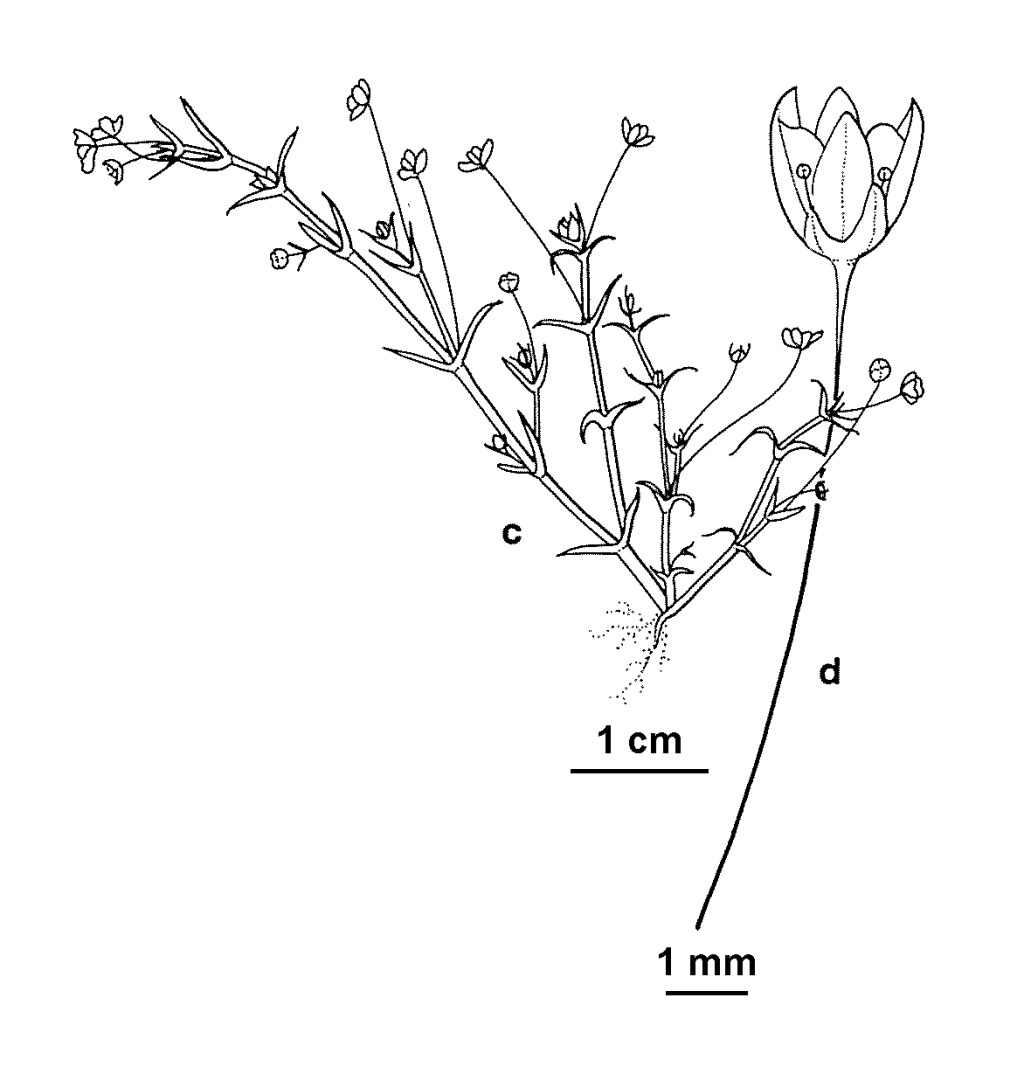Crassula peduncularis
(Sm.) Meigen Purple CrassulaAnnuals or short-lived herbs with branches erect or decumbent, to 6 cm long, often rooting at nodes, usually forming dense cushions. Leaves linear-lanceolate, 1.5–4.2 mm long, 0.3–0.6 mm wide, acute, more or less biconvex; sheath 0.4–0.8 mm long. Flowers solitary in axil of 1 leaf at usually 2 or more successive nodes; 4-merous; calyx-lobes broadly triangular, 0.2–0.7 mm long, rounded to (rarely) acute; corolla white, lobes oblong-oblanceolate, 0.9–1.6 mm long, obtuse or rounded, erect; nectary scales narrowly oblong, 0.3–0.5 mm long, c. 0.1 mm wide, rounded or truncate; carpels cylindric-ovoid, with 8–14 ovules. Follicles opening along the whole suture; fruiting pedicel usually elongating, 0.4–13 mm long; seeds 0.3–0.35 mm long, with several longitudinal ridges more or less granulate to tuberculate. Flowers mainly Aug.–Nov.
LoM, MuM, Wim, GleP, VVP, VRiv, MSB, RobP, MuF, GipP, OtP, WaP, Gold, CVU, GGr, DunT, NIS, EGL, EGU, WPro, HSF, HNF, MonT. Also WA, SA, NSW, Tas. Grows on mud around standing water, often associated with rock pools, particularly in granite.
Toelken, H.R.; Jeanes, J.A.; Stajsic, V. (1996). Crassulaceae. In: Walsh, N.G.; Entwisle, T.J., Flora of Victoria Vol. 3, Dicotyledons Winteraceae to Myrtaceae, pp. 542–555. Inkata Press, Melbourne.
 Spinning
Spinning



